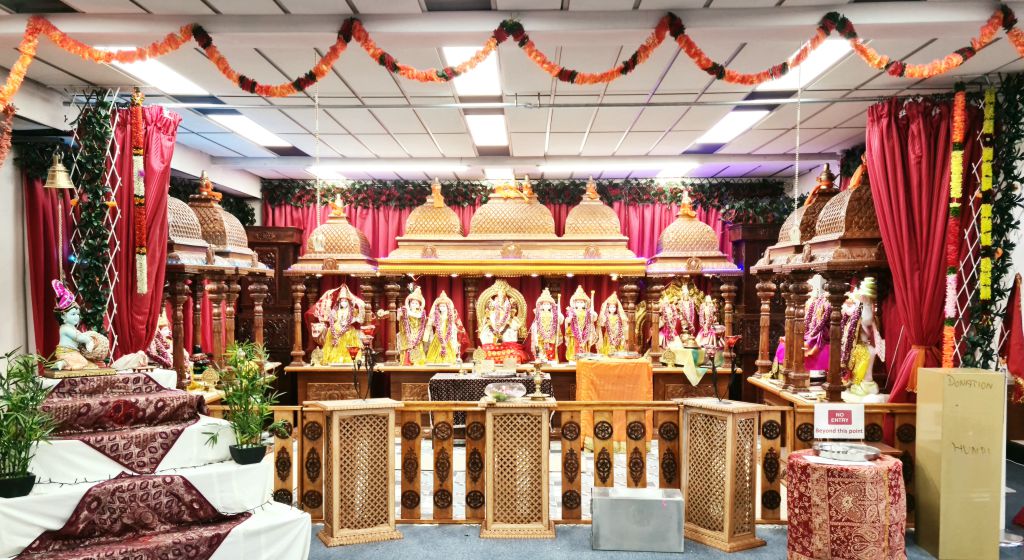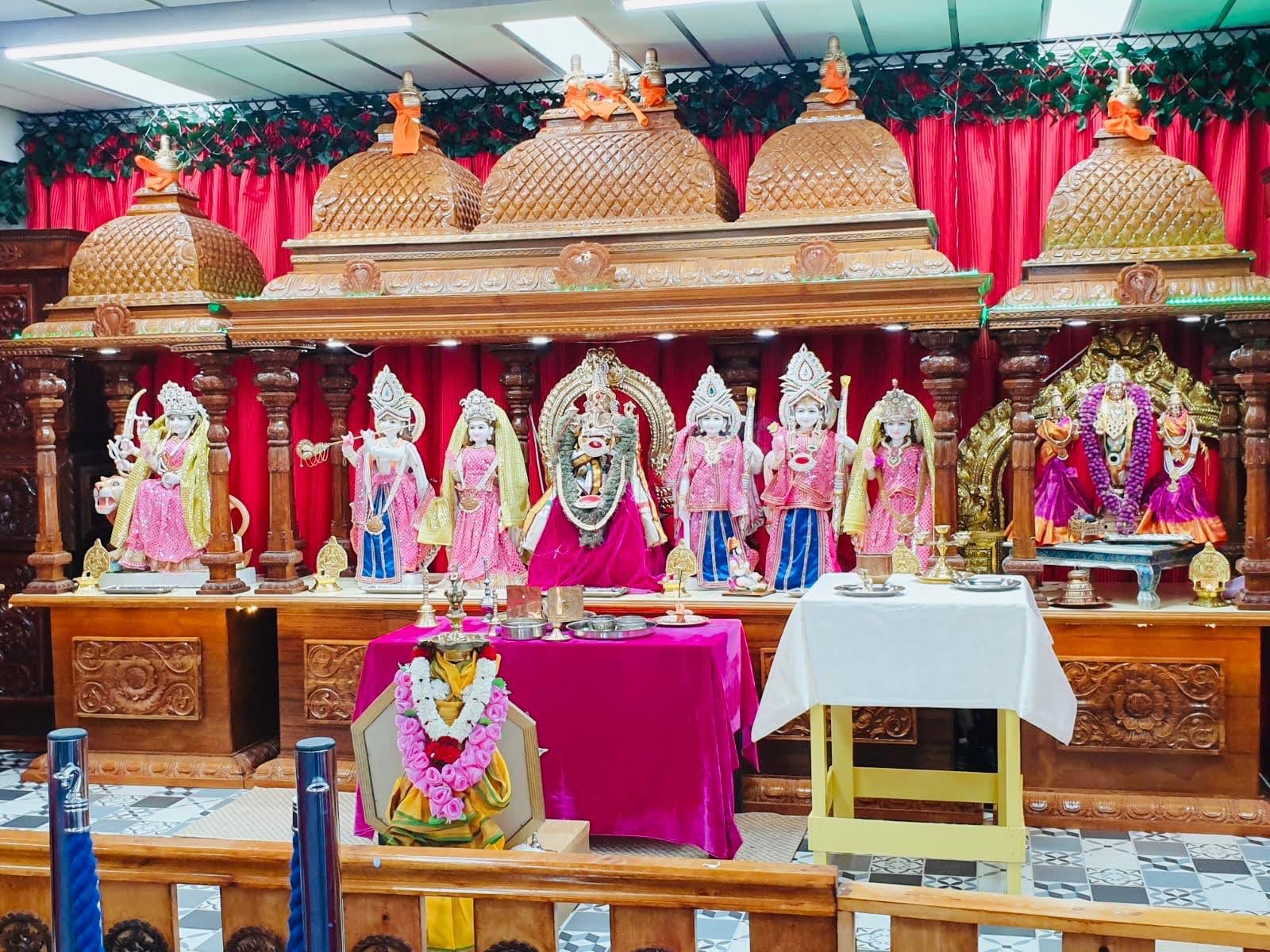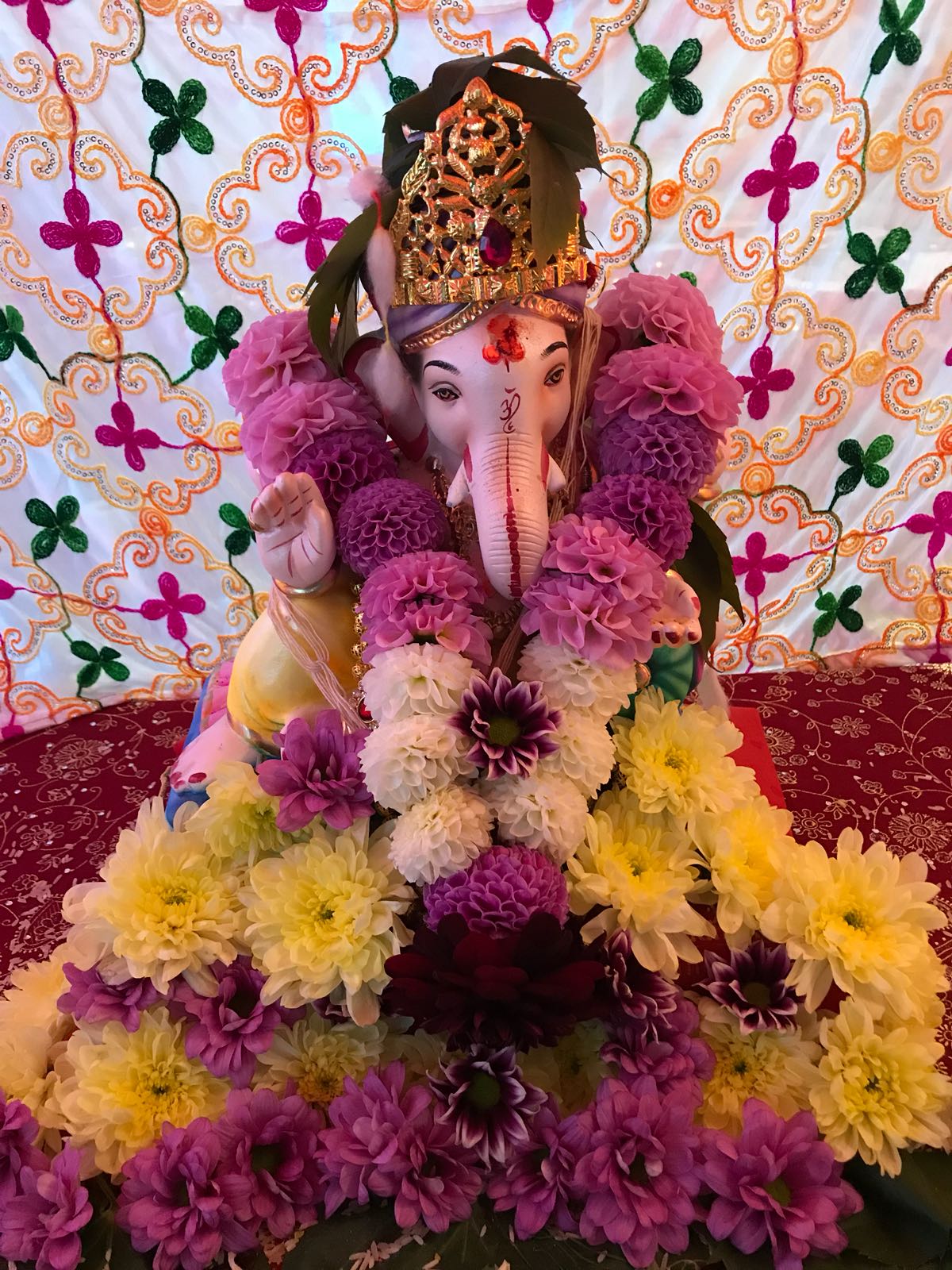
Ganesha (Sanskrit: गणेश, IAST: Gaṇeśa), also known as Ganapati and Vinayaka, is one of the best-known and most worshipped deities in the Hindu pantheon. His image is found throughout India, Nepal, Sri Lanka, Thailand, Indonesia (Java and Bali), Singapore, Malaysia, Philippines, and Bangladesh and in countries with large ethnic Indian populations including Fiji, Guyana, Mauritius, and Trinidad and Tobago. Hindu denominations worship him regardless of affiliations. Devotion to Ganesha is widely diffused and extends to Jains and Buddhists.
An elephant–headed anthropomorphic figure on Indo-Greek coins from the 1st century BCE has been proposed by some scholars to be “incipient Ganesha”, while others have suggested Ganesha may have been an emerging deity in India and southeast Asia around the 2nd century CE based on the evidence from archaeological excavations in Mathura and outside India. Most certainly by the 4th and 5th centuries CE, during the Gupta period, Ganesha was well established and had inherited traits from Vedic and pre-Vedic precursors. Hindu mythology identifies him as the restored son of Parvati and Shiva of the Shaivism tradition, but he is a pan-Hindu god found in its various traditions. In the Ganapatya tradition of Hinduism, Ganesha is the supreme deity. The principal texts on Ganesha include the Ganesha Purana, the Mudgala Purana, Ganapati Atharvasirsha, Brahma Purana and Brahmanda Purana. (Source: Wikipedia)
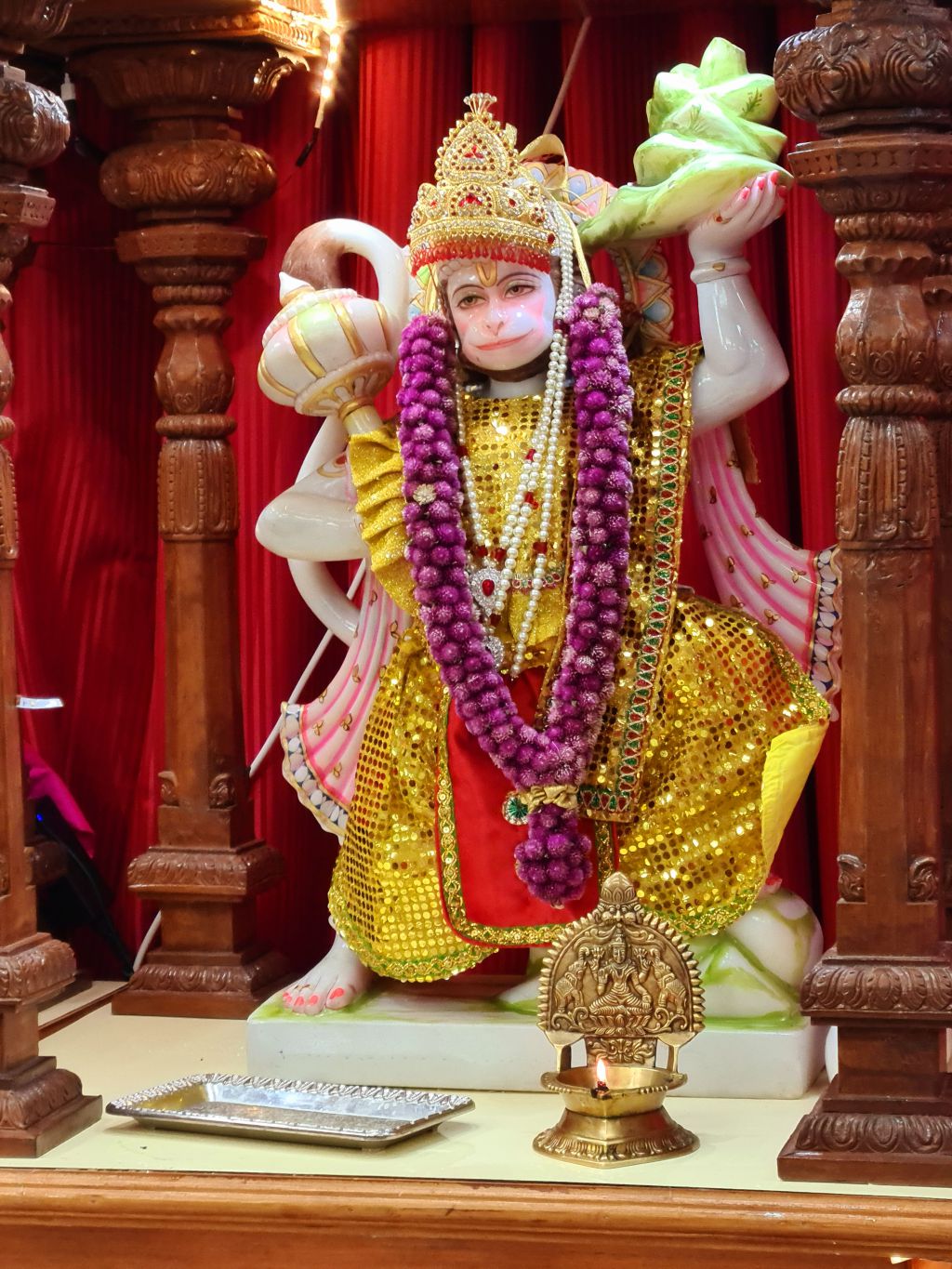
Hanuman (/ˈhʌnʊˌmɑːn/; Sanskrit: हनुमान्, IAST: Hanumān) is a Hindu god and divine vanara (monkey) companion of the god Rama. Hanuman jee was born to mother Anjana and father Kesari. Hanuman is also called the son of the deity Vayu (Wind god) because of legends associated with Vayu’s role in Hanuman’s birth.
Hanuman is one of the central characters of the Hindu epic Ramayana. He is an ardent devotee of Rama and one of the chiranjivis. Hanuman is also son of the wind-god Vayu, who in several stories played a direct role in Hanuman’s birth. Hanuman is mentioned in several other texts, such as the epic Mahabharata and the various Puranas.
Hanuman jee is viewed as the ideal combination of “strength, heroic initiative and assertive excellence” and “loving, emotional devotion to his god Rama”, as Shakti and Bhakti. He symbolizes the human excellences of inner self-control, faith, and service to a cause, hidden behind the first impressions of a being who looks like an Ape-Man Vanara. Hanuman is considered a bachelor and exemplary celibate. Hanuman is mentioned in both the Hindu epics, Ramayana and Mahabharata. Hanuman is also mentioned in the Puranas. Hanuman is mentioned as an avatar of Rudra in few medieval-era Sanskrit texts. Shiva Purana mentions Hanuman as an avatar of Shiva; Other Puranas and scriptures mention him as an avatar of Vayu or spiritual son of Vayu. (Source: Wikipedia)
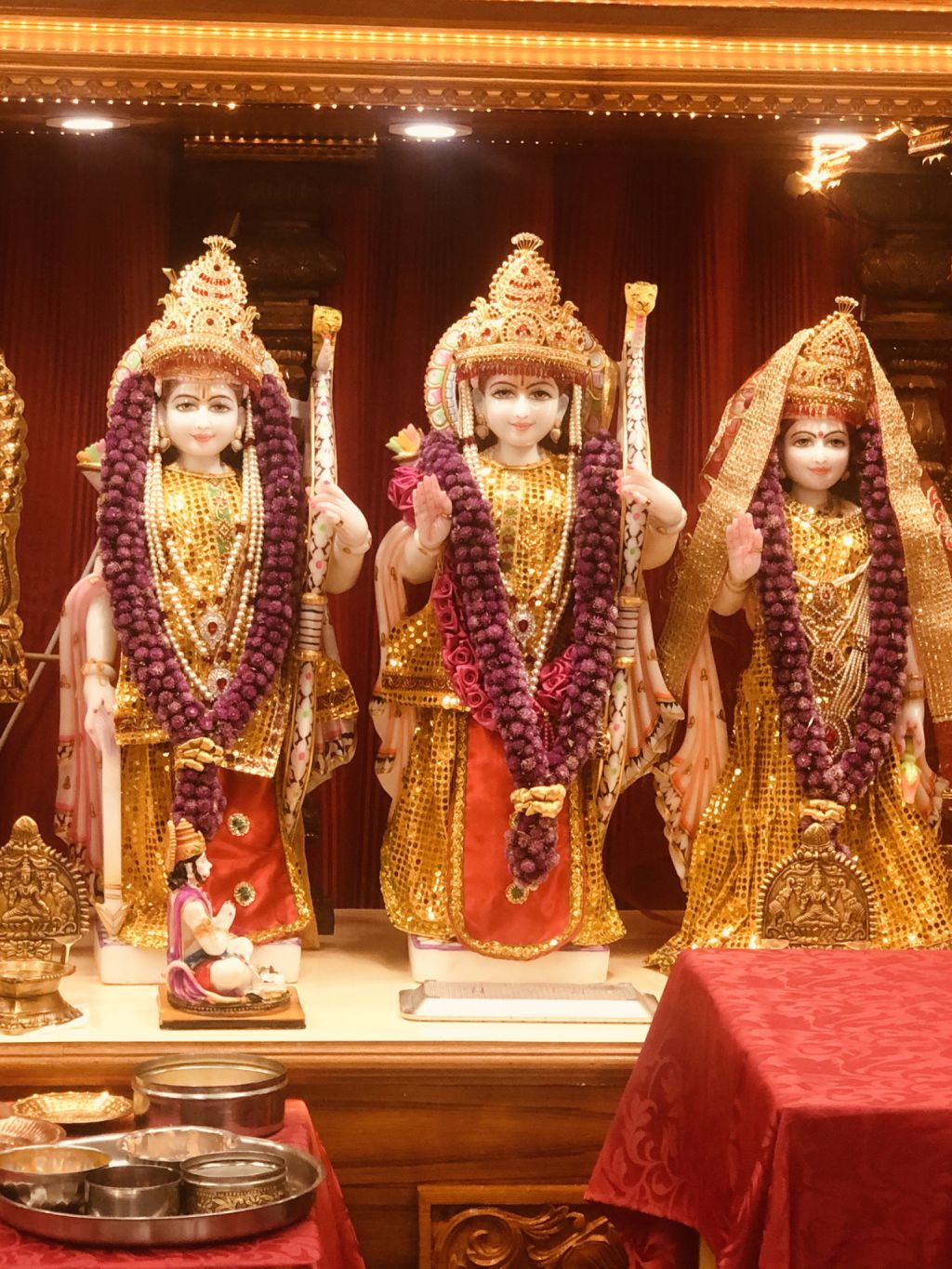
Rama (/ˈrɑːmə/;[4] IAST: Rāma, Sanskrit: राम), Ram, also known as Ramachandra IAST: Rāmacandra, Sanskrit: रामचन्द्र), is a major deity in Hinduism. He is the seventh and one of the most popular avatars of Vishnu. In Rama-centric traditions of Hinduism, he is considered the Supreme Being.
Rama was born to Kaushalya and Dasharatha in Ayodhya, the ruler of the Kingdom of Kosala. Rama was born on the ninth day of the lunar month Chaitra (March–April), a day celebrated across India as Ram Navami. This coincides with one of the four Navaratri on the Hindu calendar, in the spring season, namely the Vasantha Navaratri.
His siblings included Lakshmana, Bharata, and Shatrughna. He married Sita. Though born in a royal family, their life is described in the Hindu texts as one challenged by unexpected changes such as an exile into impoverished and difficult circumstances, ethical questions and moral dilemmas. The entire life story of Rama, Sita and their companions allegorically discusses duties, rights and social responsibilities of an individual. It illustrates dharma and dharmic living through model characters.
Rama is especially important to Vaishnavism. He is the central figure of the ancient Hindu epic Ramayana, a text historically popular in the South Asian and Southeast Asian cultures.
(Source: Wikipedia)
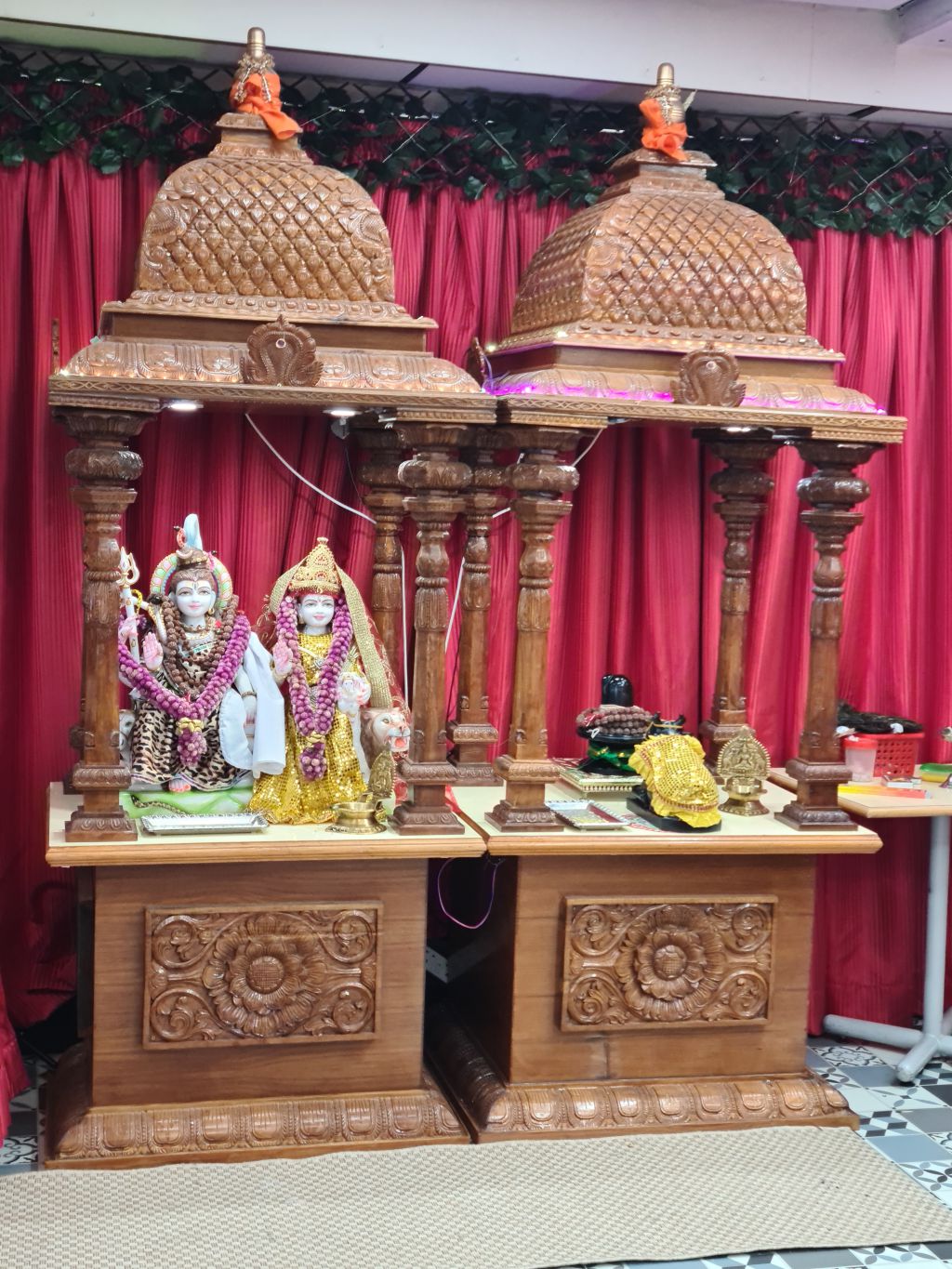
Shiva (/ˈʃɪvə/; Sanskrit: शिव, romanized: Śiva, lit. ’The Auspicious One’ [ɕɪʋɐ]), also known as Mahadeva (/ˈməhɑː dɛvə/; Sanskrit: महादेव:, romanized: Mahādevaḥ, lit. ’The Great God’ [mɐɦaːd̪eːʋɐ]) is one of the principal deities of Hinduism. He is the Supreme Being in Shaivism, one of the major traditions within Hinduism.
Shiva has pre-Vedic roots and the figure of Shiva as we know him today is an amalgamation of various older non-Vedic and Vedic deities, including the Rigvedic storm god Rudra who may also have non-Vedic origins into a single major deity.
Shiva is known as “The Destroyer” within the Trimurti, the triple deity of supreme divinity that includes Brahma and Vishnu. In the Shaivite tradition, Shiva is the Supreme Lord who creates, protects and transforms the universe. In the Shakta tradition, the Goddess, or Devi, is described as one of the supreme, yet Shiva is revered along with Vishnu and Brahma. A goddess is stated to be the energy and creative power (Shakti) of each, with Parvati (Sati) the equal complementary partner of Shiva. He is one of the five equivalent deities in Panchayatana puja of the Smarta tradition of Hinduism. Shiva is the primal Atman (Self) of the universe. There are many both benevolent and fearsome depictions of Shiva. In benevolent aspects, he is depicted as an omniscient Yogi who lives an ascetic life. Shiva is also known as Adiyogi Shiva, regarded as the patron god of yoga, meditation and arts. (Source: Wikipedia)
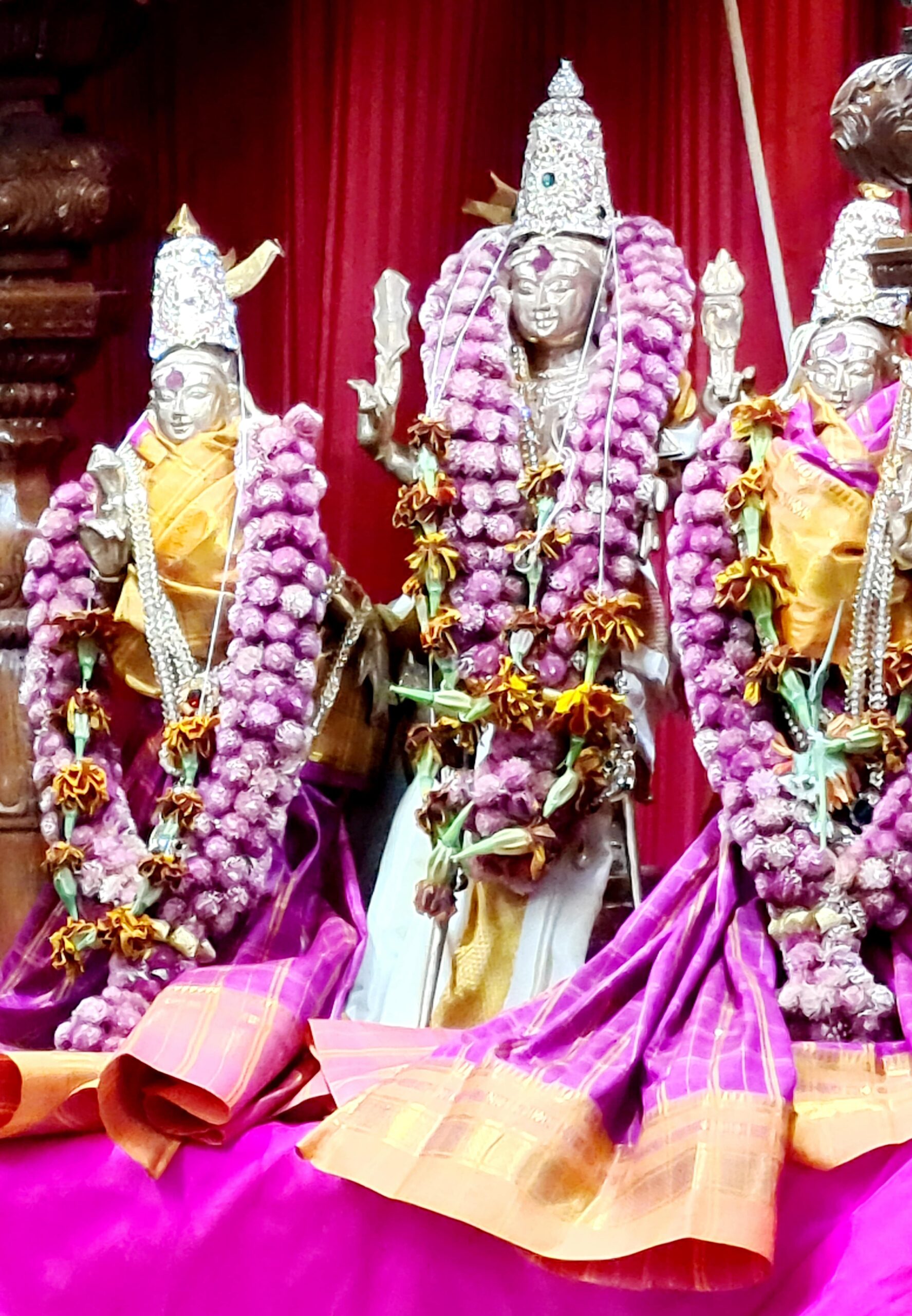
Kartikeya (Sanskrit: कार्त्तिकेय, romanized: Kārttikeya), also known as Skanda, Kumara, Murugan (Tamil: முருகன்), Shanmugha (IAST: Ṣaṇmukha) and Subrahmanya, is the Hindu god of war and Commander of Gods. Lord Murugan is a son of Parvati and Shiva, brother of Ganesha. He has two consorts (wives) Valli and Theivaianai. His vehicle is peacock.
Since ancient times, Kartikeya is particularly popular and predominantly worshipped as an important deity in the Indian subcontinent and wherever communities of the Tamil people live worldwide, particularly in Tamil Nadu state of India, Sri Lanka, Mauritius, Indonesia, Malaysia, Singapore, South Africa, Canada, and Réunion as Murugan. Kartikeya is traceable to the Vedic period. Archaeological evidence from the 1st-century CE and earlier, where he is found with the Hindu god Agni (fire), suggests that he was a significant deity in early Hinduism. He is found in many medieval temples all over India, such as the Ellora Caves and Elephanta Caves.
The iconography of Kartikeya varies significantly; he is typically represented as an ever-youthful man, riding or near an Indian peafowl, called Paravani, adorned with weapons. Most icons show him with only one head but some show him with six heads which reflect the legend surrounding his birth. He grew up quickly, becoming a philosopher-warrior, destroyed the demons Tarakasura, Simhamukha and Surapadma, and taught the pursuit of an ethical life and the theology of Shaiva Siddhanta. He has inspired many poet-saints, such as Arunagirinathar. (Source: Wikipedia)
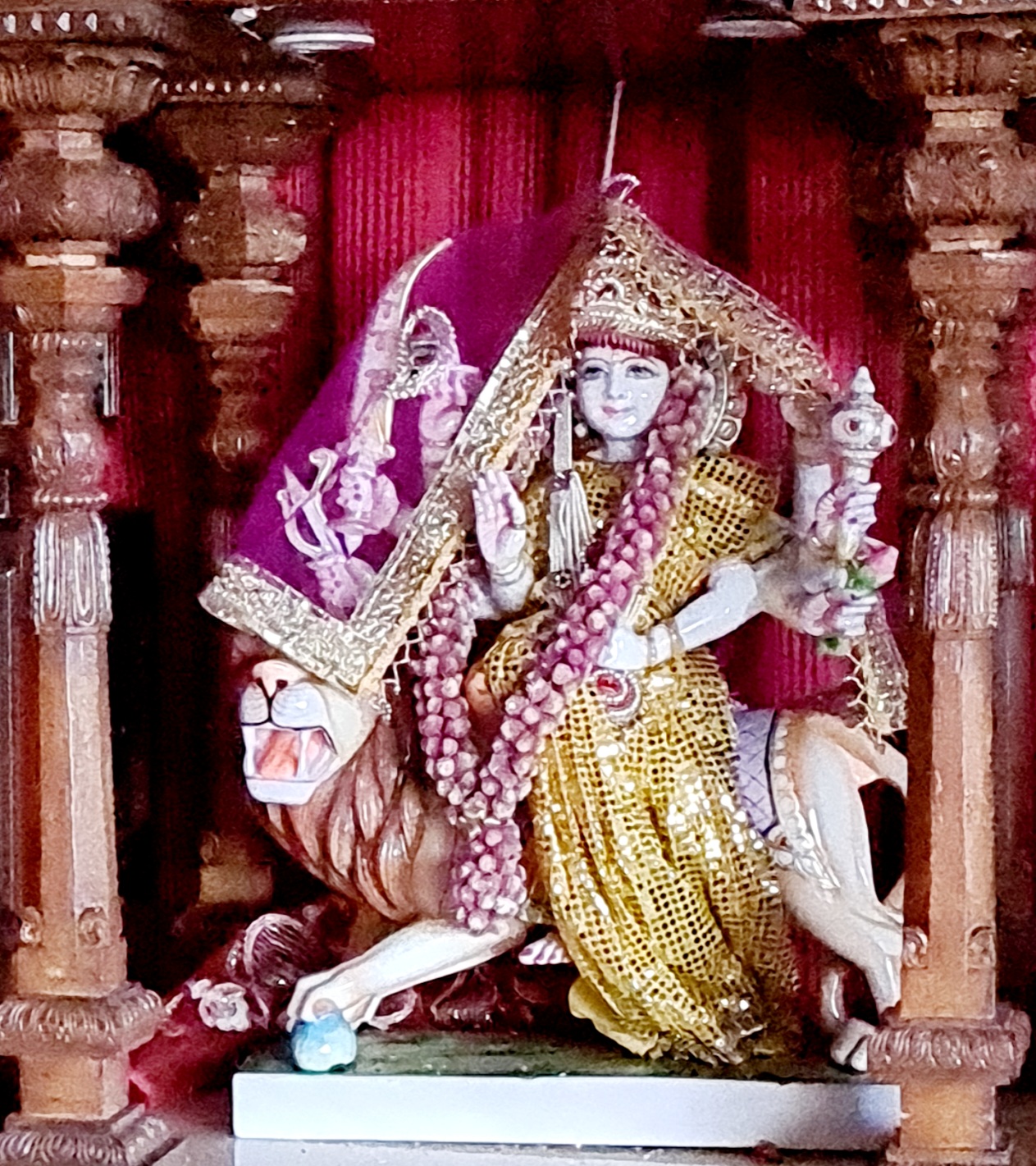
Durga (Sanskrit: दुर्गा, IAST: Durgā) is a major deity in Hinduism. She is worshipped as a principal aspect of the mother goddess Devi and is one of the most popular and widely revered among Indian divinities. She is associated with protection, strength, motherhood, destruction and wars. Her legend centres around combating evils and demonic forces that threaten peace, prosperity, and Dharma the power of good over evil. Durga is believed to unleash her divine wrath against the wicked for the liberation of the oppressed, and entails destruction to empower creation. There are several hints to her in the early Vedic texts and by the time of the epics, she emerges as an independent deity. According to Hindu legends, Durga is created by the gods to defeat the demon Mahishasura, who could be only killed by a female. Durga is seen as a motherly figure and often depicted as a beautiful woman, riding a lion or tiger, with many arms each carrying a weapon and often defeating demons. She is widely worshipped by the followers of the goddess centric sect, Shaktism, and has importance in other denominations like Shaivism and Vaishnavism. There are many devotees of Goddess Durga who recite Saptashloki Durga Saptashati to seek her blessings.
Source (Wikipedia).
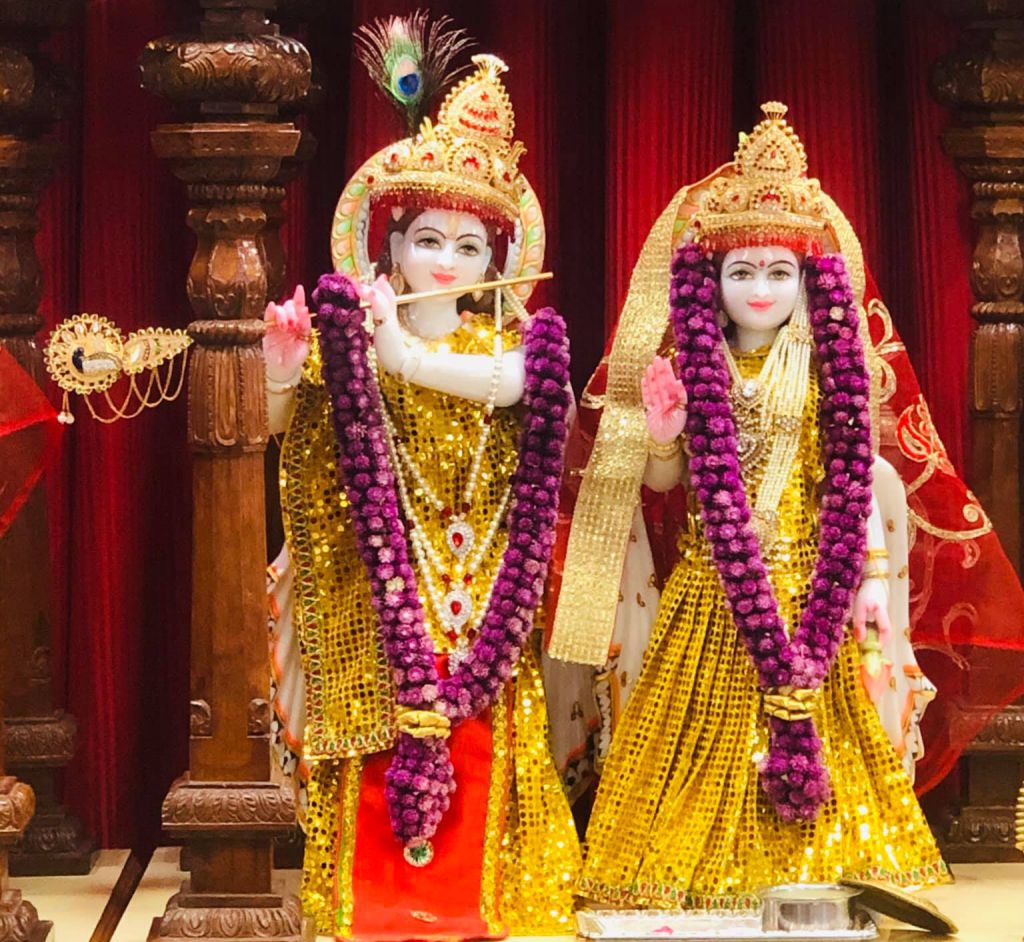
Radha-Krishna (IAST rādhā-kṛṣṇa, Sanskrit: राधा कृष्ण). In Krishnaite traditions of Vaishnavism, Krishna is referred to as Svayam Bhagavan and Radha is illustrated as the primeval potency of the three main potencies of God, Hladini (immense spiritual bliss), Sandhini (eternality) and Samvit (existential consciousness) of which Radha is an embodiment of the feeling of love towards the almighty Lord Krishna (Hladini).
With Krishna, Radha is acknowledged as the Supreme Goddess. It is said that Krishna is only satiated by devotional service in loving servitude and Radha is the personification of devotional service to the supreme lord. Various devotees worship her with the understanding of her merciful nature as the only way to attain Krishna. Radha is also depicted to be Krishna himself, split into two, for the purpose of his enjoyment. As per Hindu scriptures, Radha is considered as the complete incarnation of Mahalakshmi. Therefore, together they are called as Radha-Krishna. (Source: Wikipedia)
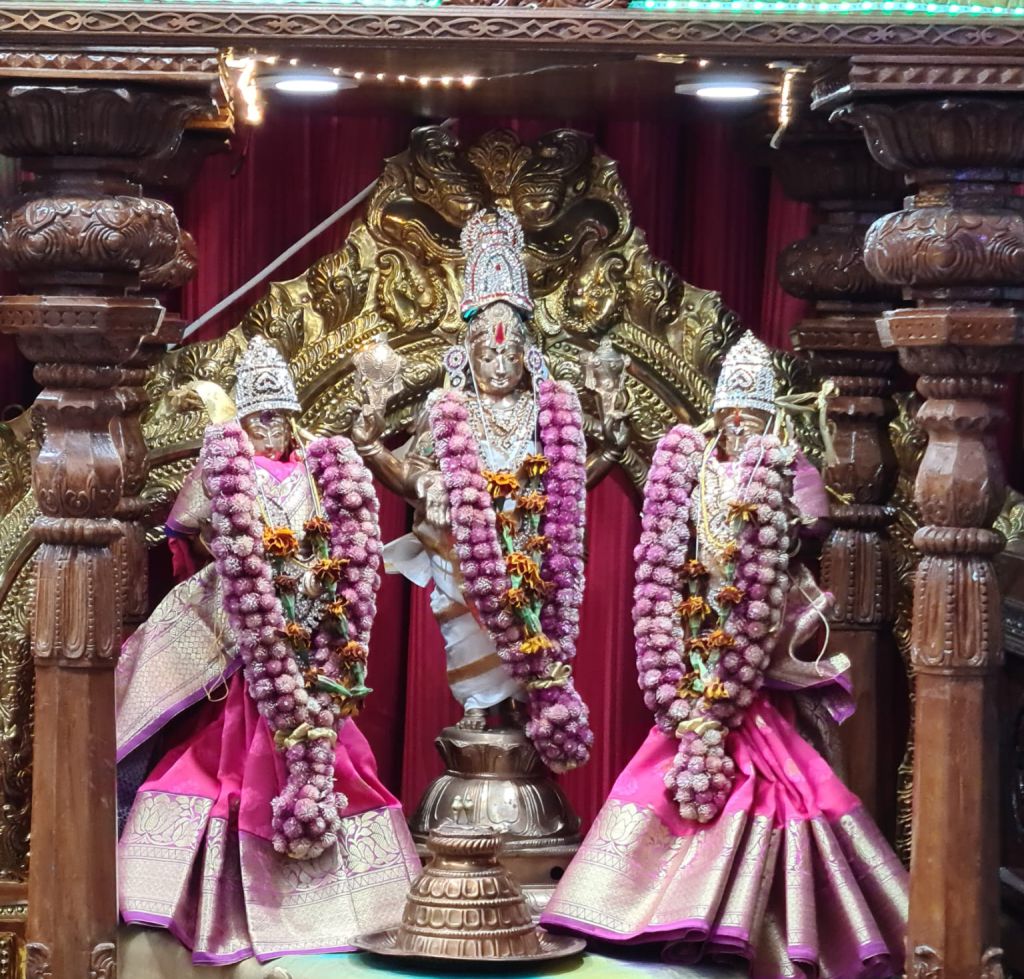
Venkateswara literally means “Lord of Venkata”. The word is a combination of the words Venkata (the name of a hill in Andhra Pradesh) and isvara (“Lord”). According to the Brahmanda and Bhavishyottara Puranas, the word “Venkata” means “destroyer of sins”, deriving from the Sanskrit words vem (sins) and kata (power of immunity).
It is also said that ‘Venkata’ is a combination of two words: ‘ven’ (keeps away) and ‘kata’ (troubles). Being that said Venkata means ‘who keeps away troubles’ or ‘who takes away problems’ or any other sentence in similar context. As per Vaikhanasa Agamas, Venkateswara is represented by five deities(berams) including the Moolavirat which are together referred to as Pancha beramulu(Pancha means five; Beram means Deity). The five deities are Dhruva Beram (Moolavar), Kautuka Beram, Snapana Beram, Utsava Beram, Bali Beram. All the pancha berams are placed in the Garbha griha under Ananda Nilayam Vimanam.
(Source: Wikipedia)
